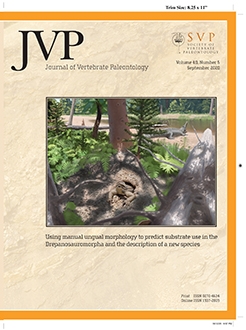We define 17 African land mammal ages, or AFLMAs, covering the Cenozoic record of the Afro-arabian continent, the planet's second largest land mass. While fossiliferous deposits are absent on the eroded plateau of the continent's interior, almost 800 fossil genera from over 350 locations have now been identified in coastal deposits, karst caves, and in the Neogene rift valleys. Given a well-developed geochronologic framework, together with continuing revision to the fossil record—both stimulated by the story of human evolution in Africa—and also to compensate for the variation in fossil ecosystems across such great distances, the AFLMAs are biochronological units defined by type localities, and not biozones to be recognized by the occurrence of certain genera. Disparities are notable: Africa is the highest of all continents, but almost every Paleogene locality was formed at sea level; the fossil record of its great rainforest ecosystem remains virtually unknown; and the Paleogene fauna is relatively isolated, whereas the Neogene begins with open exchange with Laurasia following the Tauride collision, with a simultaneous opening of the East African rift valleys in which the newly revolutionized fauna is abundantly preserved. Notably, the continent-wide and comprehensive documentation of the African mammalian record reveals an unparalleled rate of transformation in the hominin lineage, unmatched by any other group, in response to the Neogene expansion of the open-country ecosystem.
How to translate text using browser tools
5 January 2021
African Land Mammal Ages
John A. Van Couvering,
Eric Delson
ACCESS THE FULL ARTICLE





